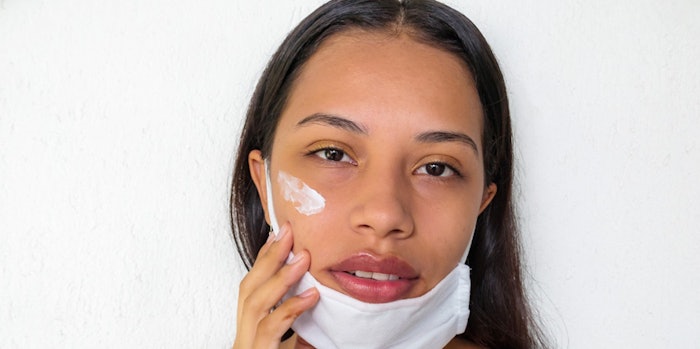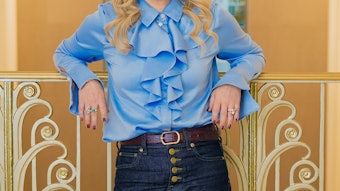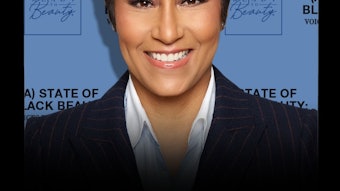
As the world figures out how to recover and reinvent from a pandemic and growing social unrest, there is a greater call for increased perspectives and voices in all areas of society. In the beauty industry, diverse schools of thought engage and elevate the marketing dialogue in a way that a singular voice does not and cannot.
A collective of six industry experts—each with their own unique business and personal backgrounds—who call themselves Women Warriors in Business, came together on a live panel called “How to Reinvent Beauty and Wellness Brands for this New Marketing Environment” to address the challenges brands are facing. The consensus? Looking at marketing and the consumer with fresh eyes is key.
Moderated by reinvention visionary and industry legend Lesley Jane Seymour, each panelist was asked to give one word to describe how they saw the future effects of COVID-19, and where marketers can key into specific areas as we move into this new way of developing and marketing products for the consumer.
Micro-culturalism
By: Roben Allong, CEO, Lightbeam Communications Corp.
Expertise: market research and strategy
The term micro-culturalism has been around for some time. First coined in 1893, Merriam Webster Dictionary it refers to a small group or subgroup within a culture with different perspectives that drive fragmentation. Subgroups possess individual identity markers that are unique to them but that also connect them together within the culture.
For instance, take LGBTQ+ and PRIDE. Originally adopted by UCSF (Lesbian, Gay, Bisexual and Transgender Resource Center at UC San Francisco) Medical Center 16 years ago, these set of values are organized under the acronym PRIDE, which stands for Professionalism, Respect, Integrity, Diversity and Excellence.
The word "pride" is an integral cultural concept within the Lesbian, Gay, Bisexual, Transgender, Queer, Intersex (LGBTQI) community, representing solidarity, collectivity, and identity as well as resistance to discrimination and violence.
While each subgroup identifies and communicates differently, they intersect at the corner of gender fluidity. We are moving away from the perceived “average” we-consumer and toward the micro-cultural world of specific identity markers- the “I- consumer.”
I-consumer subgroups thrive in the social media world where their voices amplify micro-culturalism, yet spark deeper connections. Social media, i.e., Twitter, Instagram and Reddit, have provided bigger megaphones to subcultures. It brings them together in a new, faster, more powerful and unifying way that wields great influence.
COVID-19, along with the current U.S. political climate, locally and globally, has catapulted micro-culturalism from the fringes to the mainstage. When it comes to beauty, brands would do well to pay attention to this growing subculture movement as it takes hold.
Beauty is deeply individual; it is differentiated by unique identity markers, but yet there is unity in the pursuit of it. Successful brands will be those that rethink how they authentically engage with and design products for the I-consumer addressing individuality within unity to be both sustainable and thrive in a post-COVID world.
Digital
By: Sheri L. Koetting, founder and chief brand strategist, MSLK Inc.
Expertise: digital marketing; brand strategy & design
WSL Marketing Inc. reports that during the pandemic, 56% of customers ordered groceries and health products for delivery. What is most shocking is that 50% of that group utilized these services for the first time. Quarantine forced a broad range of demographics to try new online experiences and their comfort level with technology will continue to expand.
In beauty, much of the journey to purchase is in the influence phase. Pre-quarantine, consumer discovery online was white hot and consumers are definitely doing more of it now. Retailers that are open for business report that consumers are doing less browsing in store. More than ever, brands and consumers have to rely on the digital experience to build trust and intrigue with consumers pre-sale.
The secret to leveraging the vast assortment of digital tools and media available begins with a deep understanding of your target audience and brand value proposition. Every new media is merely another tool to be leveraged to provide a clear and cohesive brand story. Now is a great time to ensure your Amazon presence and pricing is consistent with your e-commerce storefront.
From Google ads to Tik Tok, the biggest decision is prioritizing which tools to use. Don’t spread yourself too thin, rather focus on what platforms capitalize on your unique brand assets, suit your target audience and balance the budget. With a deep understanding of these factors, brands should consider reallocating marketing budgets to the media that yields the most bang for their buck.
Mindfulness
By: Cherie Buziak, founder and CEO, BeautyEdge LLC
Expertise: beauty/wellness product innovation & trends
Elevated levels of stress, anxiety and uncertainty are bound to continually affect our mental well-being at both a conscious and subconscious level. Many are finding resilience and regaining a sense of calm and peace through mindfulness practices accompanied with personal care and home products. AI is another element that is part of our new collective (even if distant) experience of daily life.
A tremendous amount of research and technological advancements are available to enhance our mental, psychological, and emotional state through wellness techniques. Collaborations with mindfulness and corporate companies are gaining ground. For example, in May 2020, all American Express U.S. personal card members had the opportunity to receive a complimentary one-year premium membership to Calm, a sleep and meditation app.
When it comes to beauty and wellness, we’ll be seeing more brands connecting to the consumer through rituals, using products to enhance wellness with ingredients and fragrances designed to promote physical well-being and positive feelings such as energy, calm, relaxing, and inner-strength.
We will see more AI and neuro-marketing put into practice, as well as the advancement of different “brain hacks” for increased performance. Devices like Halo that claim to help brains increase both cognitive and physical performance are bubbling up in the market.
Neuroplasticity research is an exciting frontier to keep an eye on as we continue to adjust as a global society. Read more about the healing of mental, physical brain trauma and neuroplasticity here.
Agility
By: Janice Hart, key account director, Bell Flavors and Fragrances
As the consumer shifted during COVID, companies needed to shift, as well. Bell Flavors & Fragrances needed to be agile and nimble to meet the changing demands of our customers. Many of our competitors could not keep up with that shift in needs in such a short period of time. Fashion houses were creating masks, and beauty companies changed their production to create hand sanitizers.
Bell quickly modified where we put our creative resources. Our agility gave us the ability to meet the changing need for different fragrances and flavors to satisfy the changing mindset of the customer. We were able to complete this while prioritizing the health and safety of our employees first, as well as acting as a reliable partner. Agility is the key to reinvention moving forward.
More than ever we need to understand the needs of today’s consumer. It is beyond just listening to them, but really understanding their concerns about today and tomorrow. We know the consumer is in a self-care mindset, but what are they looking for next? Euromonitor predicts the beauty consumer is going to further explore gut health plus mental well-being regarding stress, sleep and anxiety.
According to a recent health and nutrition survey they conducted internationally, over 60% of the people across all generations—Z, millennial, X and boomers—are looking to simplify their lives, and over 50% are experiencing high levels of stress.
The results indicate that the consumer will continue to be more self-indulgent and actively look for products that bring happiness. Our perfumers at Bell are constantly creating to meet the emotional needs of the consumer. Building on natural, preventative and health-orientated narratives will become even more vital in the post-pandemic world.
Mirroring
By: Kathleen Dillon Carroll, founder & CEO, The Branding Clinic, LLC
Expertise: brand positioning & consumer insights
Going forward into the “new normal,” it is increasingly important that brands mirror their desired consumers (whether loyalists or prospects) in their product development and advertising (content, as well as media) choices. Segmentation was the du jour way to handle this in the past, using quantitative methods.
To mirror effectively however, micro-segmentation schemes are needed and unlike segmentation, these are often handled best with qualitative methods using in-home ethnographies or online in-depth interviews
It used to be that segmentations were defined using demographics, behaviors and attitudes. Then brands started differentiating based on causes they supported to make the world a better place. Now with the new factors of coronavirus and increasing purchases along social justice lines, as well as values, marketers are faced with an increasing number of ways to differentiate. This is a good thing as differentiation drives greater sales.
However, the marketer is challenged to “get it right” and risks alienating loyal customers by choosing the wrong stance. For instance, in advertising, does a brand reflect today by showing people social distancing or wearing masks? By understanding customers on a deeper level qualitatively, marketers can effectively “mirror” their audience to signal “I am you.”
Pure
By: Anonymous Contributor (senior brand + business strategist)
Expertise: clean beauty + wellness
Overall, in the new normal, health and safety are going to be more top of mind. All beauty and wellness brands, no matter where they fall in terms of level of naturalness, will need to be very mindful of understanding what ingredients in their products have the potential for questions about health and safety.
Consumers are going to be less and less willing to make trade-offs regarding their health. They are going to demand safe, effective products that are increasingly free of potentially controversial ingredients.
There will continue to be a growing demand for products like sulfate-free hair care, paraben-free skin care and growing intolerance for questionable ingredients such as talc in foundation powders and lead in lipstick.
We will start to see even more of a blurring between clean beauty and mainstream beauty as the clean beauty brands continue to educate consumers on the ingredients with specific health concerns. Consumer health and safety perceptions are going to be especially important as brands reinvent themselves for the new normal.










